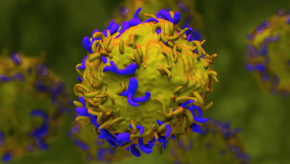News
Beyond malignancy, look out for LICATS with CAR-T
CAR T cell therapy took the centre stage in 2022 where data pertaining to a successful case series of 5 patients with refractory SLE were published by Prof Schett’s group. Since then, this area of therapeutic has expanded exponentially. Our growing enthusiasm was slightly dampened though when the FDA required all six approved CAR T-cell therapies in oncology to include a black box warning regarding the risk of second primary malignancies in January 2024. At ACR25, Prof Schett’s group described a new form of toxicity in patients with autoimmune disease receiving CAR T-cell therapy, most likely due to the cleansing of immune cells from the affected organs.Taking a closer look: B-Cell depletion beyond the blood
Following the landmark case series by the Erlangen group, multiple cellular therapies have entered the race—each with unique targets, constructs, and mechanisms. Yet, a fundamental question remains: How deep is the B-cell depletion? In clinical practice, peripheral blood counts often serve as our surrogate for depletion. But these may only tell part of the story.Deep Learning Model Accurately Detects Ankylosing Spondylitis on MRI
AI continues to move from research labs into rheumatology clinics, promising to reshape how inflammatory diseases are diagnosed and monitored. Ankylosing spondylitis, in particular, poses a diagnostic challenge—its early imaging findings are subtle, and radiographic changes may take years to appear and require specific musculoskeletal radiology expertise. A new deep learning model offers a glimpse into how AI could bridge this diagnostic gap.Sjögren's disease RCTs: Has the Long Drought Ended?
Sjögren's disease has been a difficult space for new FDA approvals. At ACR 2025, two late breaking abstracts have triggered hope for patients suffering from Sjögren's disease.Tacrolimus in Lupus Nephritis Management
Prof. Sandra Navarra and colleagues compared the efficacy and safety of tacrolimus and glucocorticoids vs. mycophenolate mofetil (MMF) as a continuous induction-maintenance treatment for class III/IV+V lupus nephritis.ACR 2025 Rheumatology Round Up
Drs. Jack Cush & Arthur Kavanaugh, two of rheumatology’s most trusted voices, provide a breakdown of the latest breakthroughs and hottest topics in rheumatology from the 2025 ACR Convergence meeting in Chicago.
ACR25 Best Abstracts - Day 4
Here's the last installment of our "ACR Best" abstracts as chosen by the RheumNow faculty. Most of these were from the final, day 4, but a few were noteworthy holdovers from day 3. Enjoy!
Halloween ACR Guidance (10.31.25)
Dr. Jack Cush recaps ACR2025 with suggestions on how to best learn ACR25 content from RheumNow.com and our articles, videos and podcasts.Why I love the late breaking abstracts
Every year I love the late breaking abstracts. It’s consistently my favourite part of the meeting program, by some distance. Here's why you should love them, too.Where are we at with PD-1 agonism?
Promising novel mechanisms of action always create excitement, but the immune checkpoint PD-1 has cemented itself in the news far more than most. This fame is primarily from therapeutic inhibition in cancer and rheumatological inflammatory sequelae that emerge, but invoking the inverse and using PD-1 agonism to treat classical autoimmunity has subsequently been making its own mark. Given the evident plausibility, how do we feel about invoking the opposite and agonising PD-1 in classical autoimmunity?Bone Density in Ankylosing Spondylitis
Ankylosing spondylitis (AS) is a burden on the bones—both literally and diagnostically. The disease’s dual nature, marked by chronic inflammation and abnormal new bone formation, complicates the assessment of bone health.















